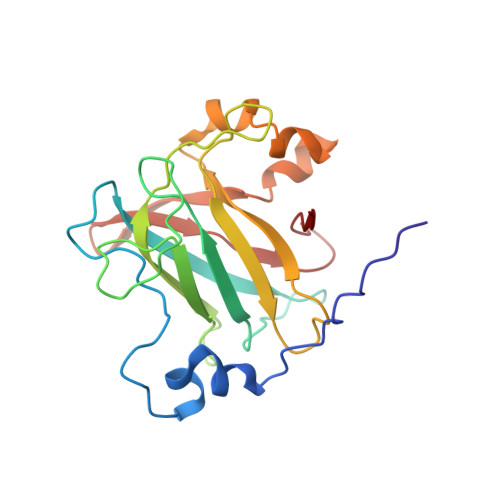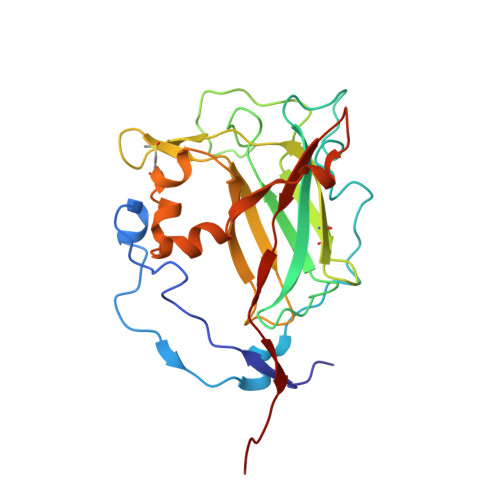Crystal structures of alkylperoxo and anhydride intermediates in an intradiol ring-cleaving dioxygenase.
Knoot, C.J., Purpero, V.M., Lipscomb, J.D.(2015) Proc Natl Acad Sci U S A 112: 388-393
- PubMed: 25548185
- DOI: https://doi.org/10.1073/pnas.1419118112
- Primary Citation of Related Structures:
4WHO, 4WHP, 4WHQ, 4WHR, 4WHS - PubMed Abstract:
Intradiol aromatic ring-cleaving dioxygenases use an active site, nonheme Fe(3+) to activate O2 and catecholic substrates for reaction. The inability of Fe(3+) to directly bind O2 presents a mechanistic conundrum. The reaction mechanism of protocatechuate 3,4-dioxygenase is investigated here using the alternative substrate 4-fluorocatechol. This substrate is found to slow the reaction at several steps throughout the mechanistic cycle, allowing the intermediates to be detected in solution studies. When the reaction was initiated in an enzyme crystal, it was found to halt at one of two intermediates depending on the pH of the surrounding solution. The X-ray crystal structure of the intermediate at pH 6.5 revealed the key alkylperoxo-Fe(3+) species, and the anhydride-Fe(3+) intermediate was found for a crystal reacted at pH 8.5. Intermediates of these types have not been structurally characterized for intradiol dioxygenases, and they validate four decades of spectroscopic, kinetic, and computational studies. In contrast to our similar in crystallo crystallographic studies of an Fe(2+)-containing extradiol dioxygenase, no evidence for a superoxo or peroxo intermediate preceding the alkylperoxo was found. This observation and the lack of spectroscopic evidence for an Fe(2+) intermediate that could bind O2 are consistent with concerted formation of the alkylperoxo followed by Criegee rearrangement to yield the anhydride and ultimately ring-opened product. Structural comparison of the alkylperoxo intermediates from the intra- and extradiol dioxygenases provides a rationale for site specificity of ring cleavage.
- Department of Biochemistry Molecular Biology and Biophysics and Center for Metals in Biocatalysis, University of Minnesota, Minneapolis, MN 55455.
Organizational Affiliation:


























